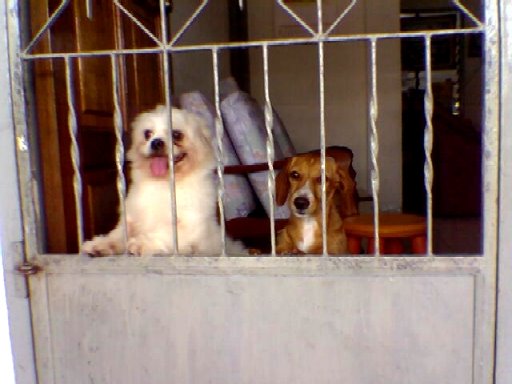Outbreaks Of Salmonella Still Found In Pet Food
Owning a pet is a big responsibility and yet many
people will take it on gladly. Pets bring much
joy and companionship to our lives and because
of this we want to give them a safe and healthy
environment to live in.
Most cats and dogs have it pretty easy today.
Their owners furnish them with pillows or beds
to sleep on and their own water and food bowls.
Sometimes they are even personalized with the
pets name on them. Making pets a part of the
family has become the norm, not the exception in
society today.
Over the past few years one problem that has
arisen for pet owners is salmonella infections.
Many times cat or dog food has to be recalled
because of a salmonella outbreak in pet food.
This problem is not only serious for pets, but
pet owners as well because it can be transferred
to humans.
Salmonella is a non-spore-forming motile
enterobacteria that obtains it's energy from
oxidation and it's reaction from other organic
sources. In fact, salmonella is closely related
to the Chinese chicken Escherichia genus which
causes problems like typhoid fever.
So how do pets get salmonella from pet food? It
is most common in dry pet food. Pet food is not
always made under as sterile conditions as human
food is. A few years back a study from the Centre
for Disease Control showed that people were being
infected with salmonella as a result of tainted
pet food. It is important that after you feed
your pet and handle their food that you wash
your hands very well.
The most common problem for this outbreak has
been linked to pig ears, or pet treats made from
beef or salmon. Pig ears are not cooked like some
pet food and sometimes the contamination comes
right from the animal carcass and not from the
processor. One way to control some of this is to
purchase pig ears that are individually wrapped,
and not stored in bulk.
Pets are vulnerable to food-borne infections
just as much as humans and so it is important to
avoid raw food diets and make sure the dog food
is stored properly. One easy but crucial task is
to make sure water and food bowls are washed
often.
Signs of Salmonella Infection In Pets
Fever
Lethargy
Diarrhoea
Vomiting
Dehydration
Swollen Lymph Nodes
Skin Disease
Many times dogs will only show signs of
gastroenteritis and in general will experience
fatigue and chronic fever. If your pet
experiences any of these signs be sure and take
them to the vet for a check-up immediately.
Pets depend on humans for their survival, so be
sure you take all the precautions needed to give
them a healthy and happy life. In general, clean
dishes and properly packaged pet foods will help
your pet live a long and healthy life.
----------------------------------------------------
This article is not intended to scare you, but to
make you aware of the potential for salmonella in
pet foods. Resourced from
http://www.dodsonandhorrellpetfood.co.uk
EasyPublish this article: http://submityourarticle.com/articles/easypublish.php?art_id=229866
>













.jpg)






.jpg)

0 comments:
Post a Comment